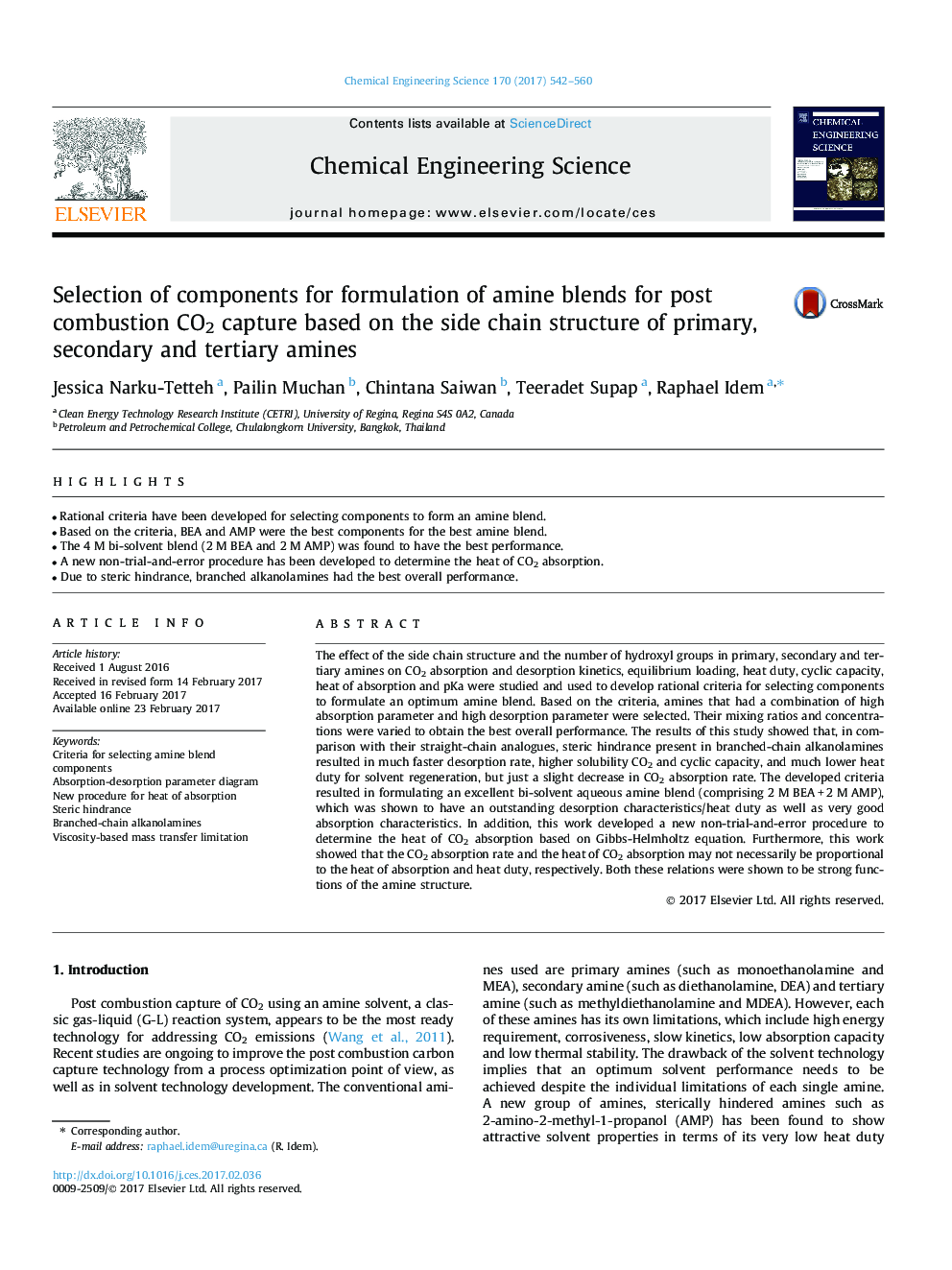| Article ID | Journal | Published Year | Pages | File Type |
|---|---|---|---|---|
| 6467292 | Chemical Engineering Science | 2017 | 19 Pages |
â¢Rational criteria have been developed for selecting components to form an amine blend.â¢Based on the criteria, BEA and AMP were the best components for the best amine blend.â¢The 4 M bi-solvent blend (2 M BEA and 2 M AMP) was found to have the best performance.â¢A new non-trial-and-error procedure has been developed to determine the heat of CO2 absorption.â¢Due to steric hindrance, branched alkanolamines had the best overall performance.
The effect of the side chain structure and the number of hydroxyl groups in primary, secondary and tertiary amines on CO2 absorption and desorption kinetics, equilibrium loading, heat duty, cyclic capacity, heat of absorption and pKa were studied and used to develop rational criteria for selecting components to formulate an optimum amine blend. Based on the criteria, amines that had a combination of high absorption parameter and high desorption parameter were selected. Their mixing ratios and concentrations were varied to obtain the best overall performance. The results of this study showed that, in comparison with their straight-chain analogues, steric hindrance present in branched-chain alkanolamines resulted in much faster desorption rate, higher solubility CO2 and cyclic capacity, and much lower heat duty for solvent regeneration, but just a slight decrease in CO2 absorption rate. The developed criteria resulted in formulating an excellent bi-solvent aqueous amine blend (comprising 2Â M BEAÂ +Â 2Â M AMP), which was shown to have an outstanding desorption characteristics/heat duty as well as very good absorption characteristics. In addition, this work developed a new non-trial-and-error procedure to determine the heat of CO2 absorption based on Gibbs-Helmholtz equation. Furthermore, this work showed that the CO2 absorption rate and the heat of CO2 absorption may not necessarily be proportional to the heat of absorption and heat duty, respectively. Both these relations were shown to be strong functions of the amine structure.
